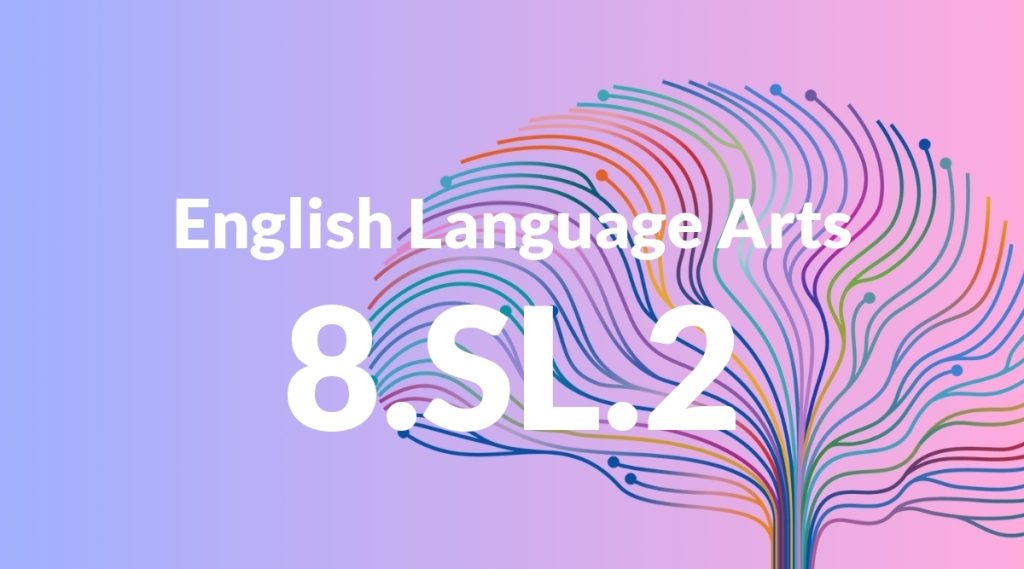Standard: 8.SL.2 – Analyze the purpose of information presented in diverse media and formats (e.g., visually, quantitatively, orally) and evaluate the motives (e.g., social, commercial, political) behind its presentation.
Grade level: Grade 8
Subject: English Language Arts
Domain: Speaking & Listening
Teacher Overview
This standard focuses on helping students analyze the purpose and motives behind information presented in various media formats. Understanding this is crucial as it empowers students to become critical consumers of information, a skill that is increasingly important in the digital age. Students should be able to identify different types of media and understand basic concepts of bias and perspective. They should also be able to extract the main idea and supporting details from a text.
Mastering this standard will enable students to critically evaluate complex texts and media, discern underlying biases and intentions, and apply these skills in constructing their own arguments and presentations.
Common Misconception 1
A common misconception is that all media is unbiased and factual. This is incorrect because media can be influenced by the creator’s perspectives, intentions, and the context in which it is produced.
Intervention 1
An evidence-based intervention is to have students compare multiple sources on the same topic, discussing the differences in presentation and motive. This helps them recognize bias and understand the importance of cross-referencing information.
Common Misconception 2
Another common misconception is that the purpose of a media piece is always obvious and straightforward. This is incorrect because media creators often use subtle techniques to influence the audience’s perception.
Intervention 2
To address this, guide students in asking critical questions about the creator’s intent, the target audience, and the context. This encourages deeper analysis and understanding of the media.
Prerequisite Knowledge
Students should have a basic understanding of different media formats (visual, quantitative, oral) and an introductory ability to identify the main idea and supporting details in a text.
Subsequent Knowledge
After mastering this standard, students will be able to critically evaluate complex texts and media, discerning underlying biases and intentions, and apply these skills in constructing their own arguments and presentations.
Instructional Activities
- Group discussions analyzing different news articles for bias
- Projects where students create their own advertisements with specific motives
- Class debates on the motives behind political speeches
- Workshops on interpreting data visualizations and identifying misleading elements




